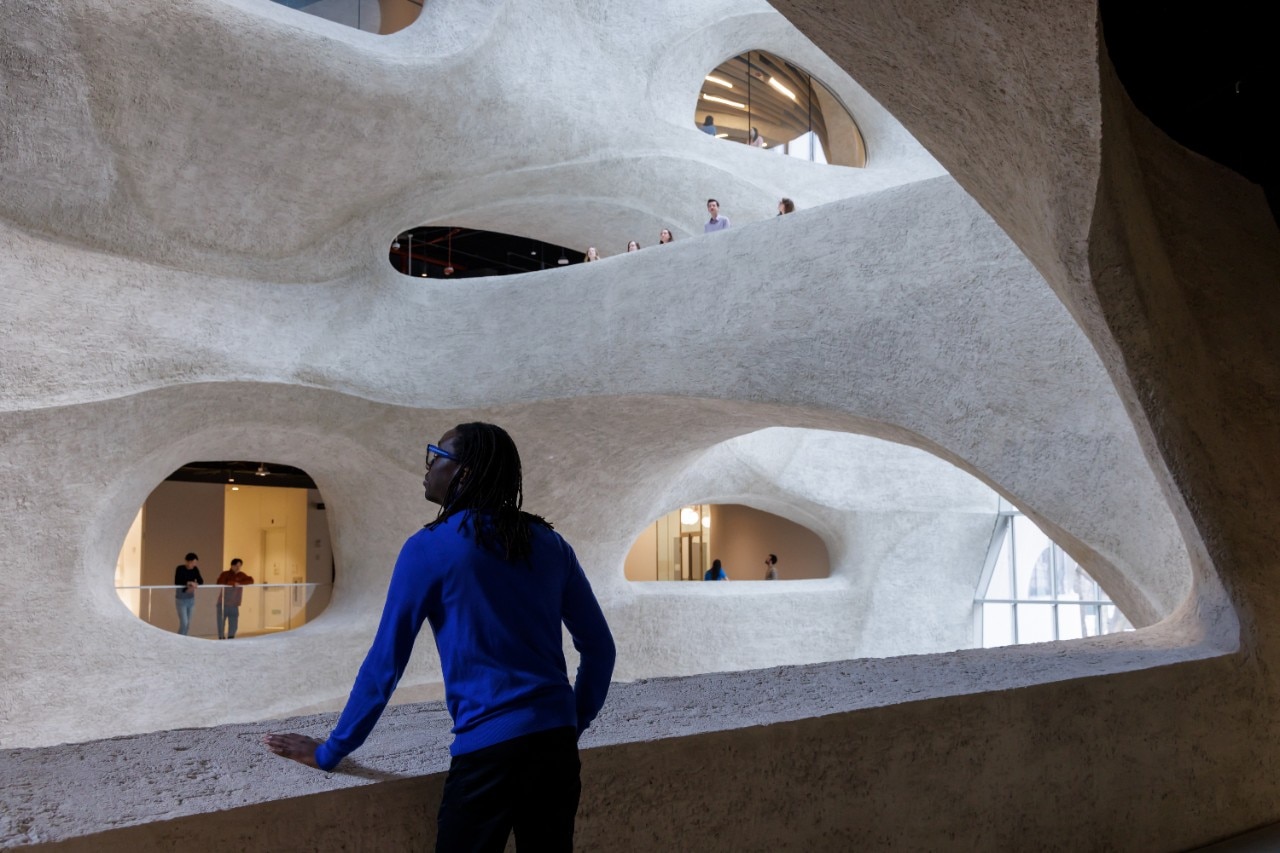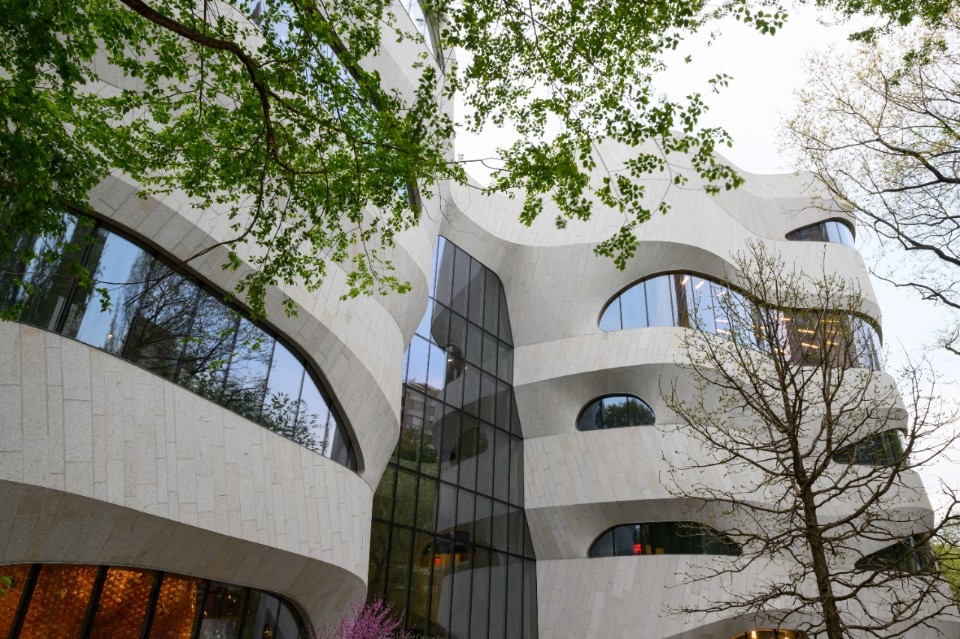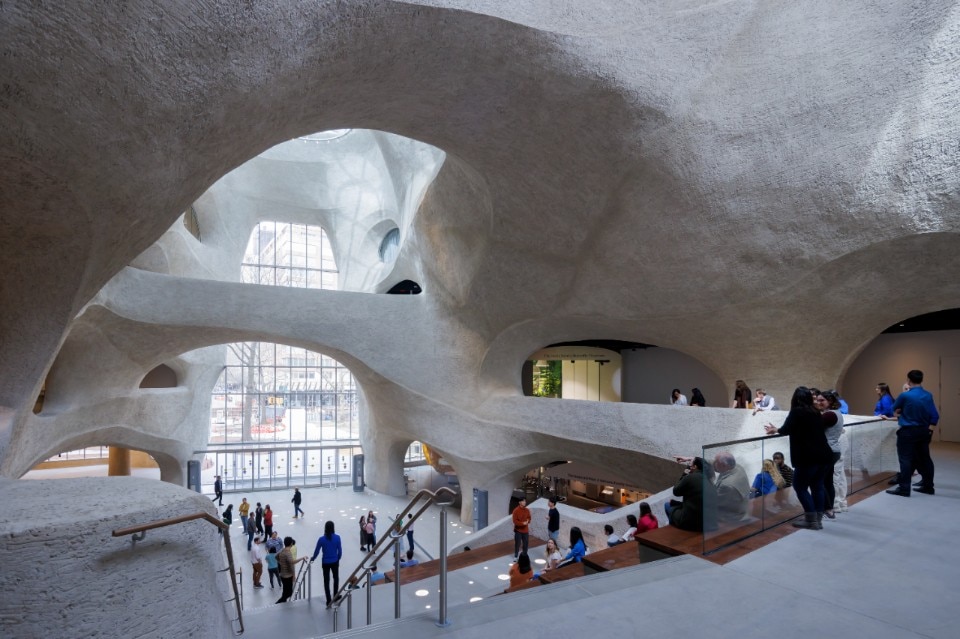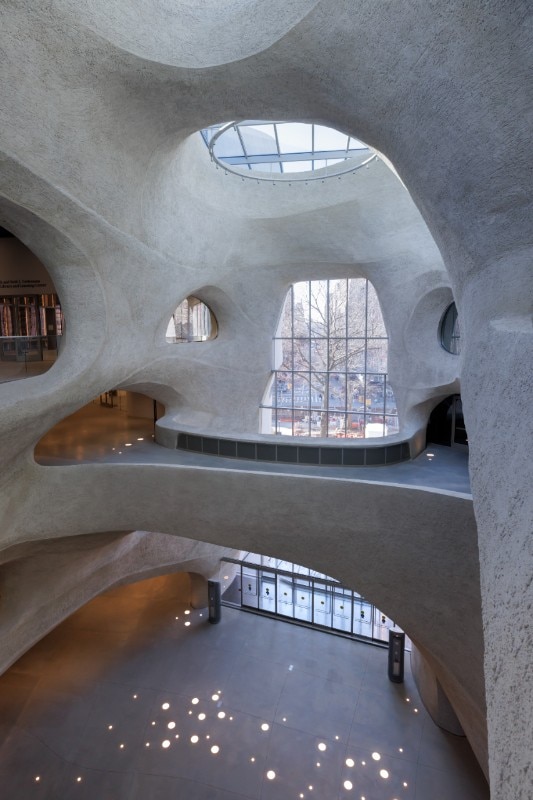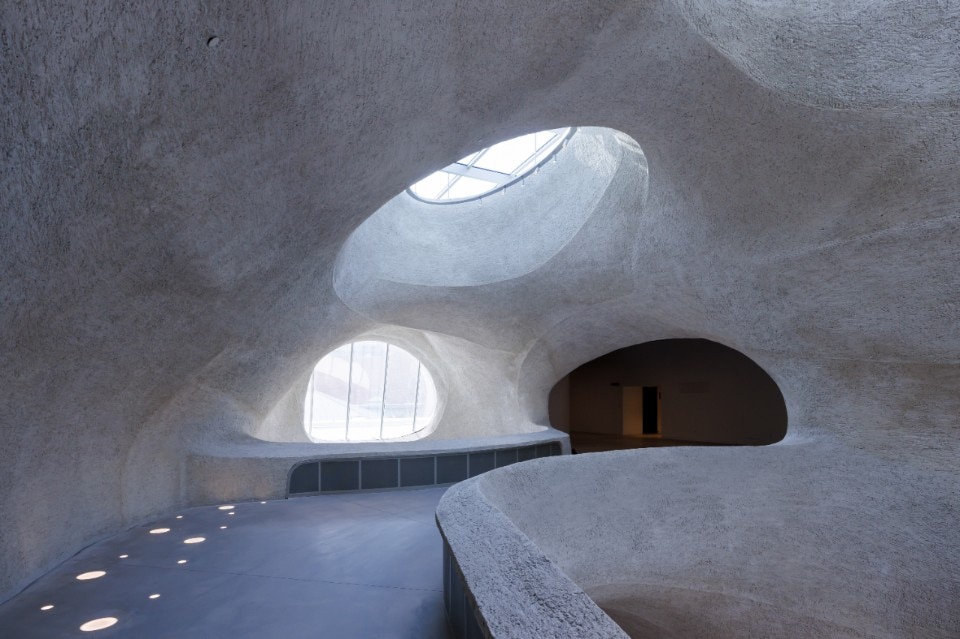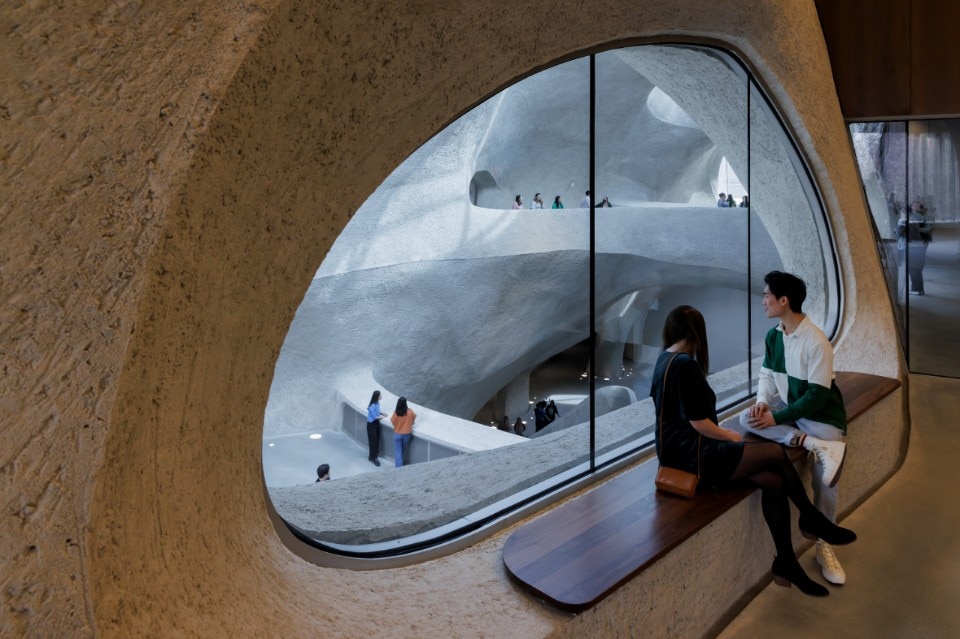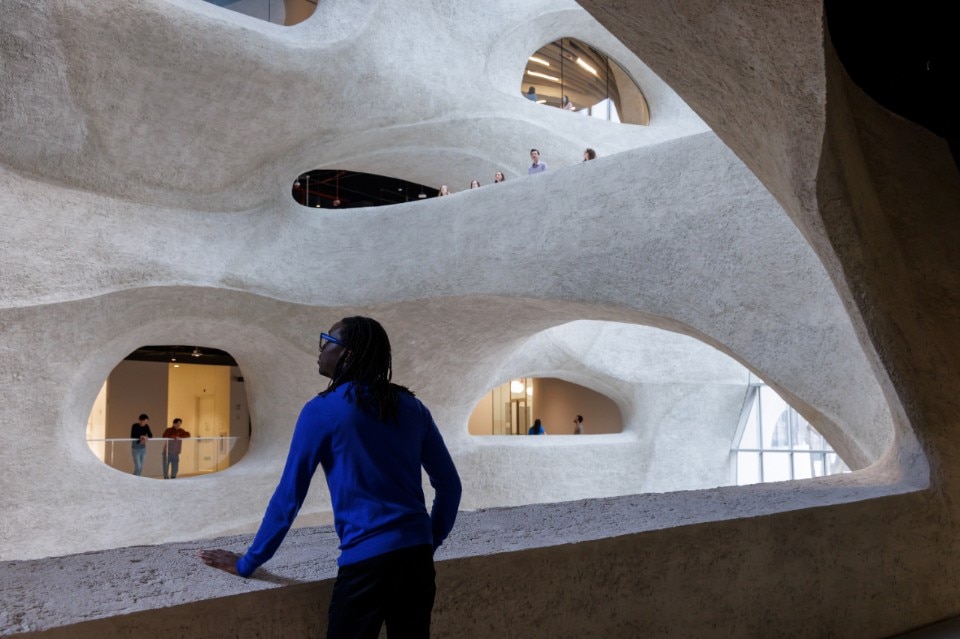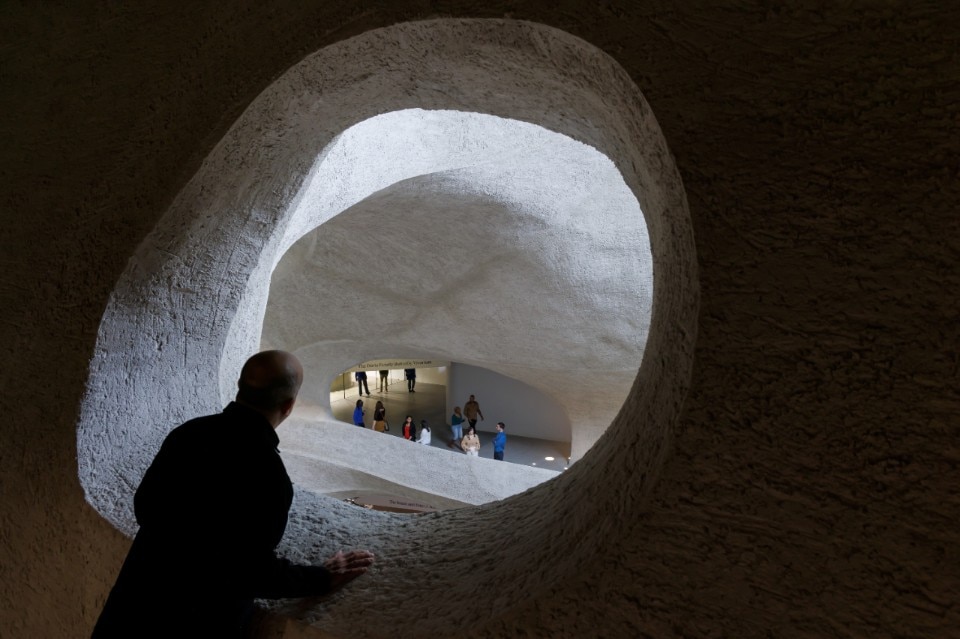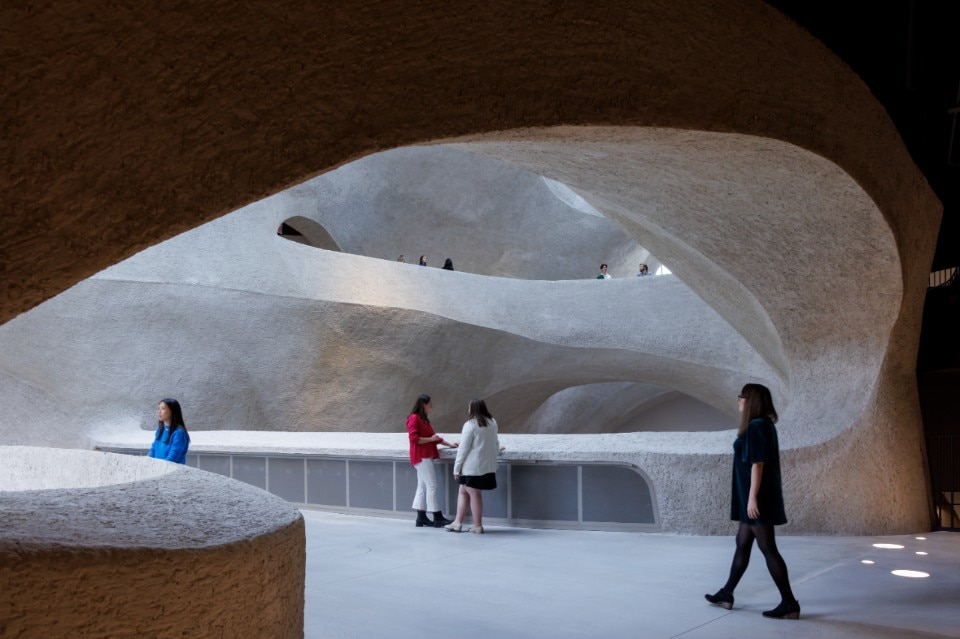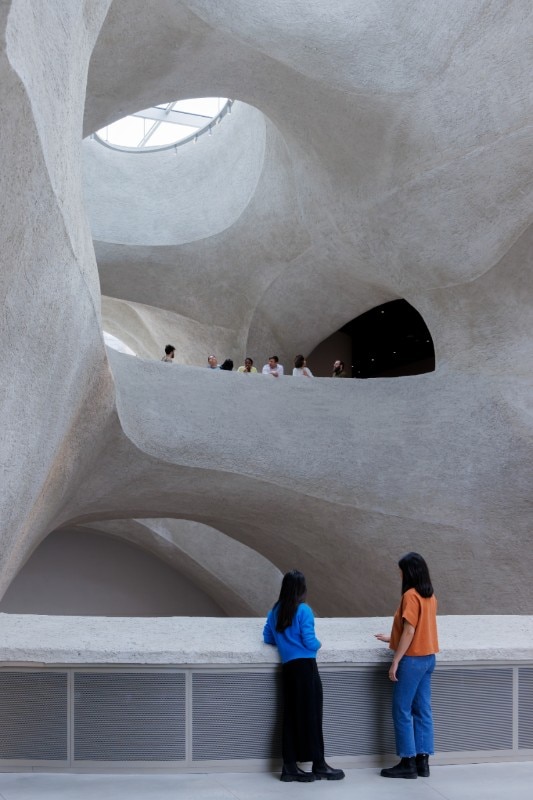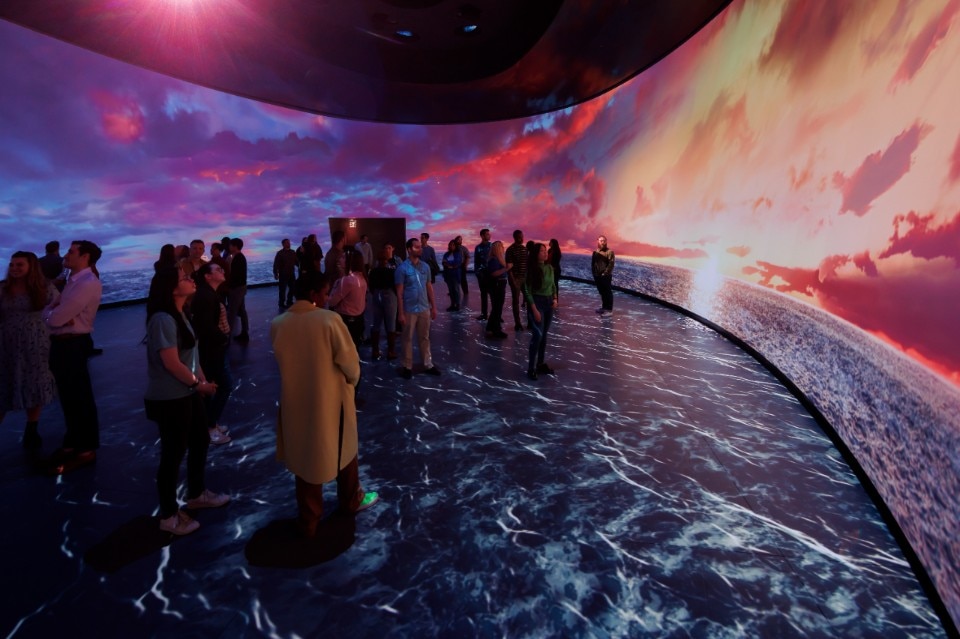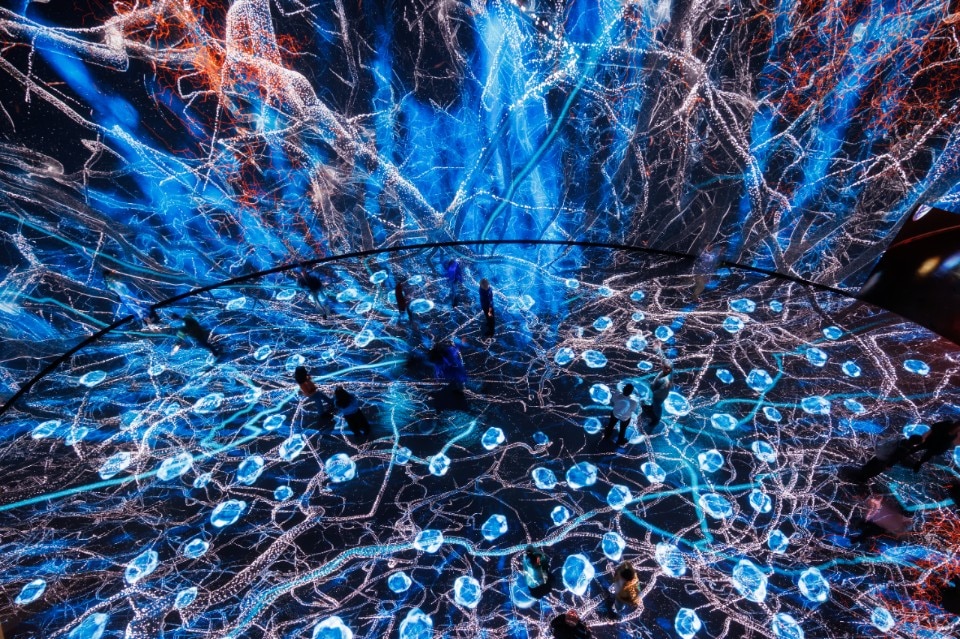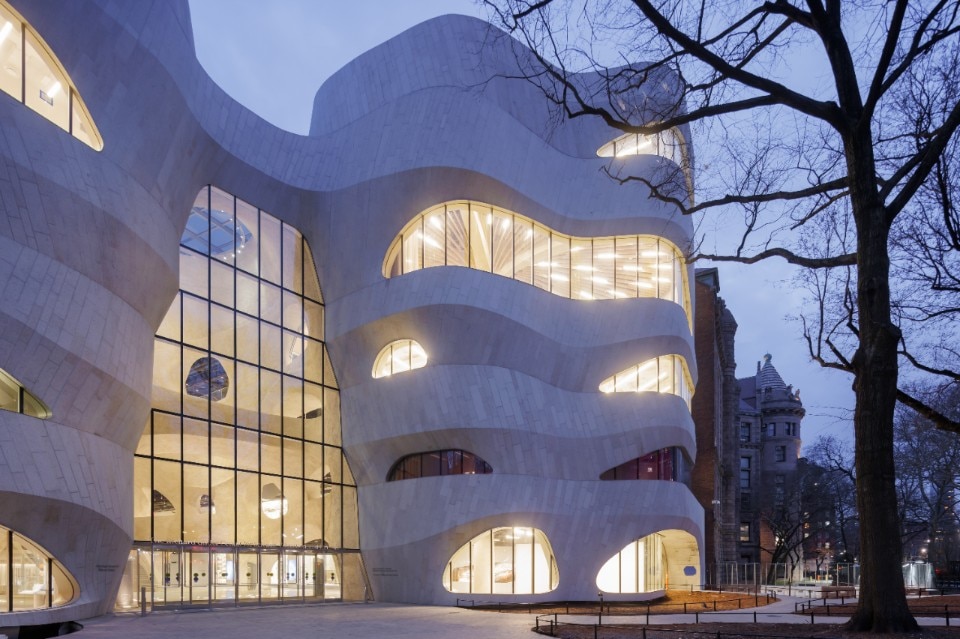Studio Gang’s extension for the AMNH, the new five-story high Richard Gilder Center for Science, Education, and Innovation, is a piece of architecture that seeks to repair our relationship to nature by restoring a sense of wonder towards it. A large skylight fills the main atrium with sunrays; visitors lift their heads and discover a series of cave like forms that lead to passageways, bridges, and classrooms. Desire to discover these curious and beautiful shapes helps us leave the city and bustling Columbus Avenue far behind and enter the realm of nature. The strong materiality of these cave-like forms is guaranteed to amaze the visitor upon entry to this newest addition to the Museum: their aesthetic appearance and material quality are such that they can easily be associated with rock formations found in Central Park, enhancing a sense of organic quality to the architecture. We have walked into a museum that opens our eyes to see nature.
Originally dated 1877, the AMNH has been added to over the last century and the result is a difficult-to-navigate maze-like journey among the patchwork of different halls and exhibition galleries that span four city blocks. Indeed, the AMNH is in much need of repair, reconstruction and rehaul. As we know it today, the museum is an amalgam of different buildings dated from different periods, the core skeleton for the pathways form a cross shape that forces visitors to backtrack to the center of the building to continue onto their journey. By adding to this structure with a series of connective galleries and bridges the Gilder Center improves the fluidity of wayfinding between the disparate pavilions and buildings of the massive museum. The result is ameliorated experience for the over five million guests the museum welcomes per year.
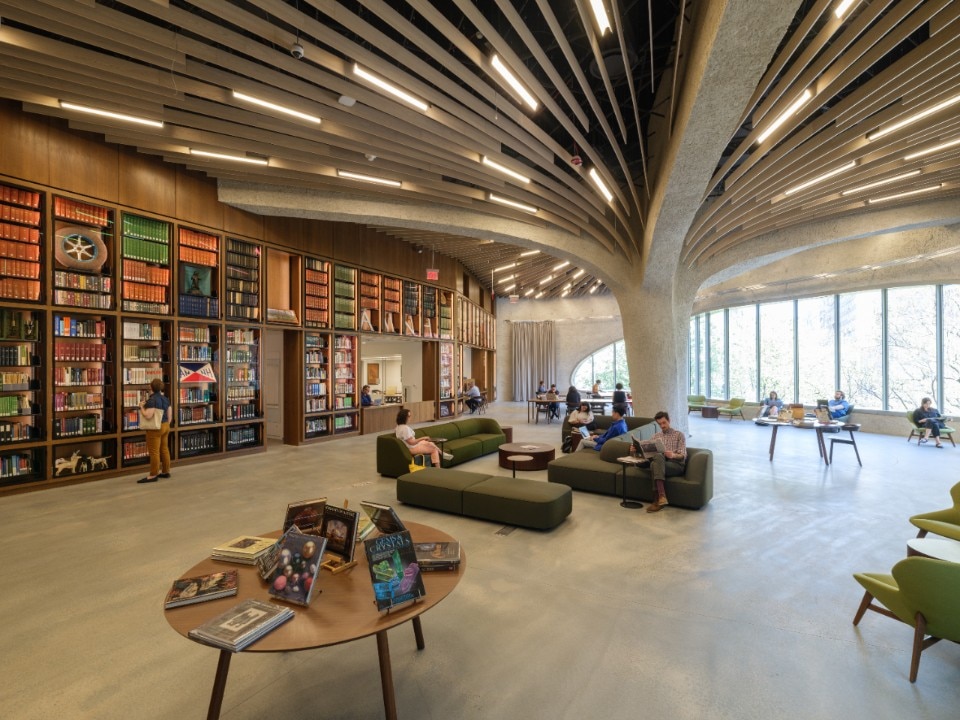
The AMNH is not only long overdue for physical repairs and better connectivity, but the institution also urgently needs to create a visitor experience that contributes to healing our relationship and attitude towards nature, which as Studio Gang’s architecture makes clear, starts with the institution’s overall posture and hospitality conditions. Indeed, the architecture Gang has conceived proposes a totally different kind of welcoming to the original entrance, the Theodore Roosevelt Memorial Hall, which was designed by John Russell Pope (1874-1937). The original hall was completed in 1936 and formed part of New York State's official memorial to President Theodore Roosevelt. Sitting exactly opposite each other on the eastern and western sides of the building on Central Park West and Columbus Avenue respectively, the two entrances are diametrically opposed in tone and symbolism.
A critique of this symbolism is radically introduced on the western side of the building by Gang. Ascending the steps on the eastern side and entering the vestibule is akin to the experience of entering the Roman Pantheon: two giant orders of Corinthian columns measuring fifteen meter high create a monumentalizing effect. Man’s domination over different non-Euro-American peoples and over nature is reaffirmed in the vestibule namely with the mural panels painted by William Andrew Mackay (1876-1939). Roosevelt, broad shouldered and dressed as an explorer, assertively stands above a Nubian lion and lioness, flanked by his gun bearers. Up until the removal of the statue of Theodore Roosevelt, this composition would have perfectly echoed the figures of the Native America Man and African man standing on either side of the explorer on the doorstep of the Museum.
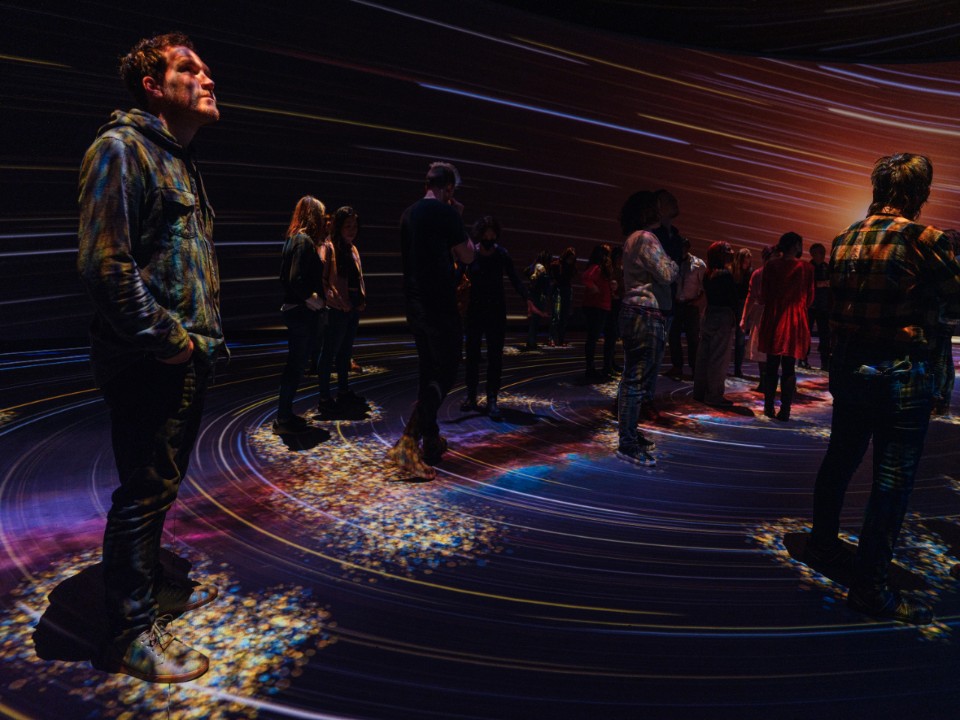
Entering from Central Park West, it is unclear what the AMNH has to do with nature if not man’s domination of it. On the opposite side of the building, with the new Richard Gilder Center for Science, Education, and Innovation, Gang proposes a powerful counter argument and subversive stance towards the symbols imbedded in the original hall. Gang’s architecture is a radical manifesto advocating for a new posture of humility towards nature. Indeed, Gang imbeds nature in architecture: entering from Columbus Avenue, visitors are faced with what looks like a geological formation—the building’s surface has nothing resembling the mechanical treatment of the smooth surface of granite of the neoclassical façade on Central Park West. The repeated cave-like forms are the result of a process called shot concrete which requires hand finishing and hence give their fluid appearance. The latter punctuate the entrance hall and contribute to blurring the line between an architecture that is natural versus one that is man-made. What’s more, the new Western entrance is stripped of any representation of man. Curvilinear, asymmetrical, the entrance is precisely anti-façade and immediately suggests, before setting foot in the institution, a certain modesty. Indeed, it lacks the organizational intent of the dominant columns punctuating the eastern entrance but seeks to achieve a decentralizing form of hospitality. The immediate signal given to the visitor is that one does not enter the building to understand man’s rationalization of nature but rather one that questions this precise history of domination, which has been at the center of the enlightenment and at the very foundation of the institution of the museum of natural history itself.
By blurring the line between nature and made, and restoring a sense of wonder towards the living, stripping the institution of old nineteenth century ideas of domination and classification of nature, Gang turns our attention to the rest of the museum and the urgent need to renew and repair its logic. Indeed, if one isn’t curious or doesn’t feel moved by nature in an institution dedicated to its study, how will we, as a society, ever be convinced of the importance of the most urgent and pressing question of our time, which is to say our ability to protect it for the future.
Beatrice Grenier is a curator and writer based in Paris. She is the Director of Curatorial Affairs at Fondation Cartier pour l’art contemporain.


